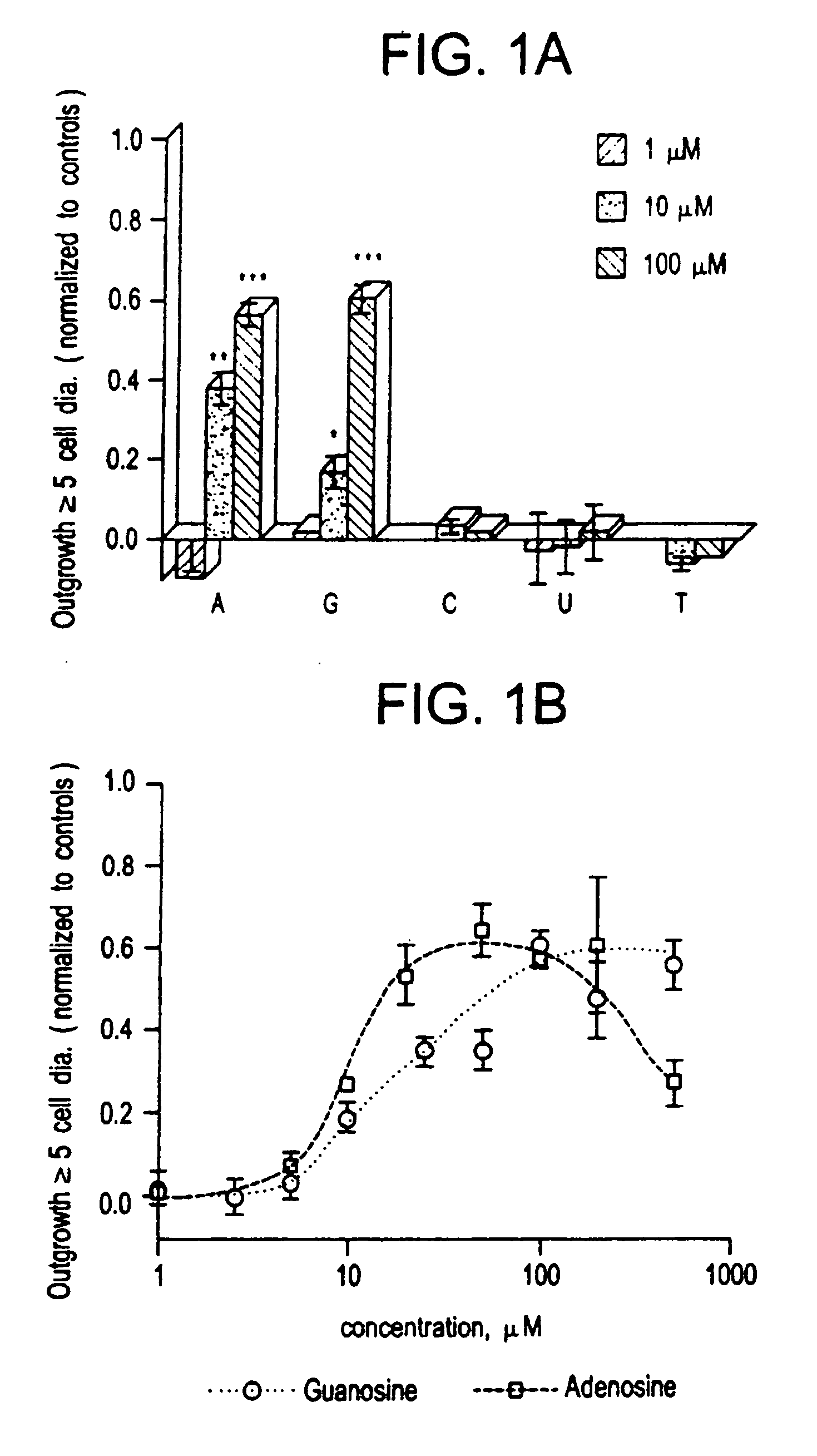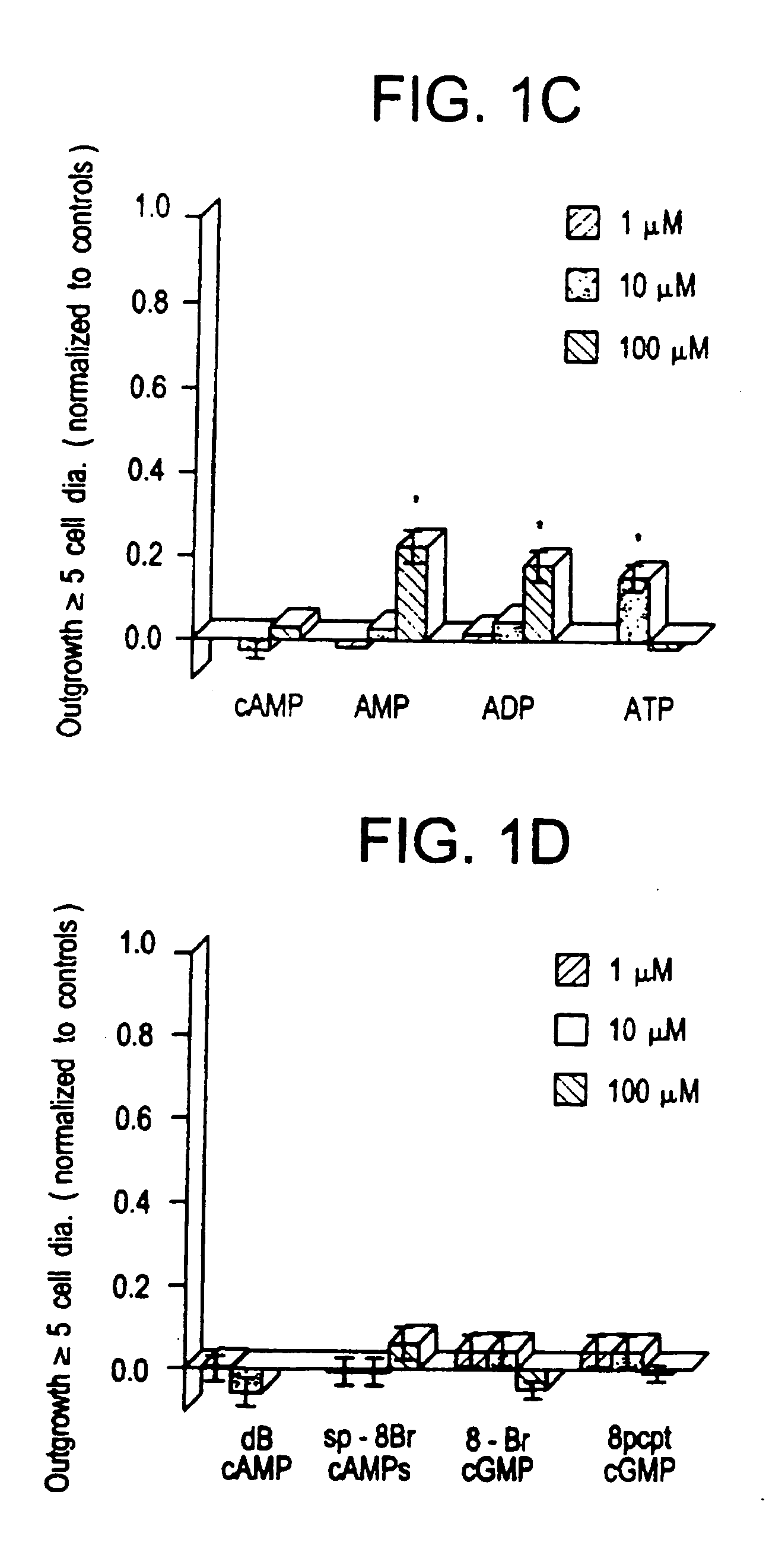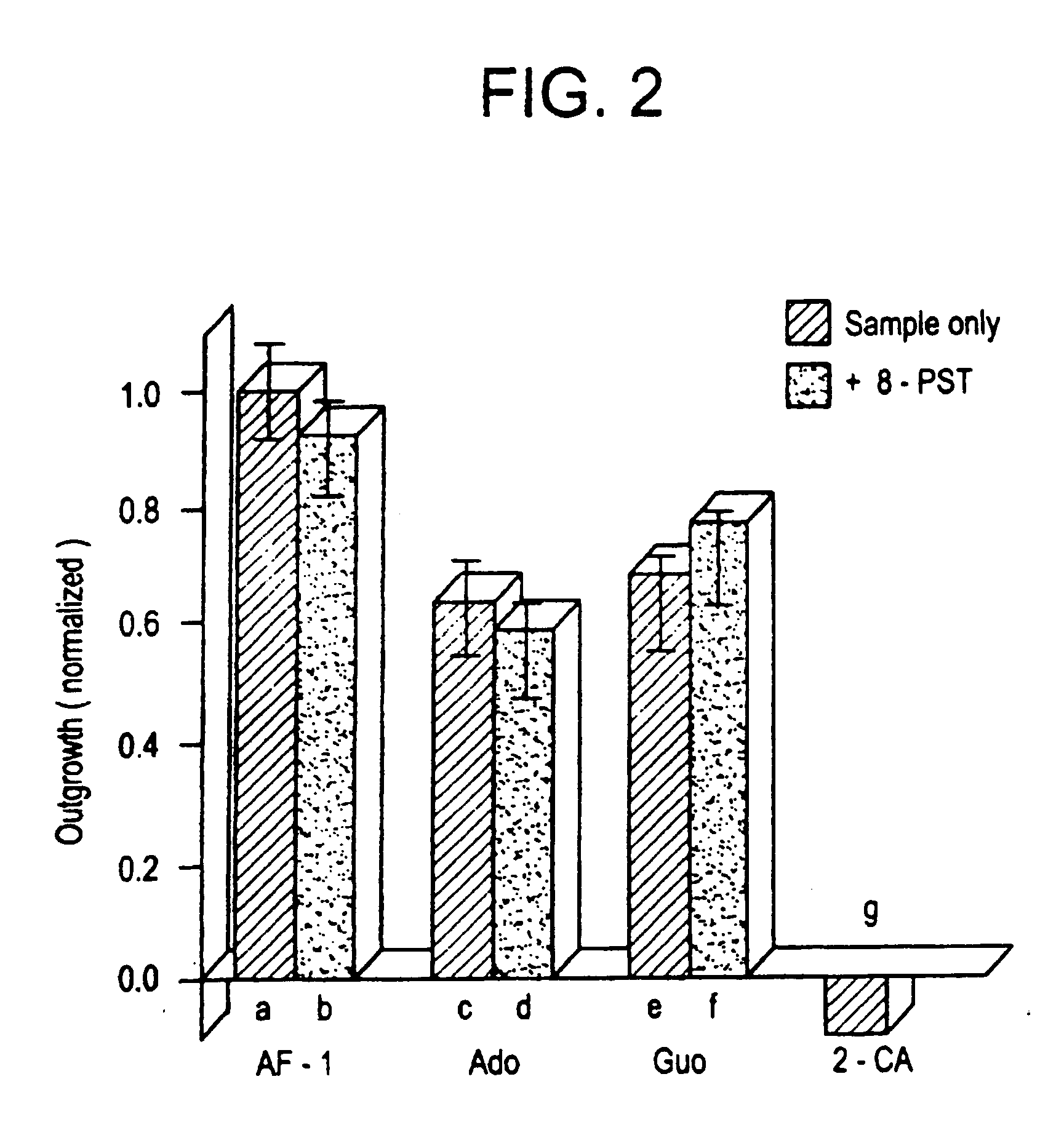Methods for modulating the axonal outgrowth of central nervous system neurons
a central nervous system and axonal outgrowth technology, applied in the direction of biocide, heterocyclic compound active ingredients, drug compositions, etc., can solve the problems of cognitive, sensory and motor function loss, loss of life-long cognitive, sensory and motor functions, and even maintenance of vital functions, etc., to achieve the effect of restoring function and restoring function
- Summary
- Abstract
- Description
- Claims
- Application Information
AI Technical Summary
Benefits of technology
Problems solved by technology
Method used
Image
Examples
examples
[0069] In the following examples, the following methodologies were used:
[0070] Axogenesis factor-1 was obtained essentially as described in Schwalb et al., 1995, and Schwalb et al., Neuroscience, 72: 901-910,1996, the contents of which are incorporated herein by reference). Optic nerves were dissected, cut into fragments 1 mm in length, and incubated in a ratio of 6 nerves in 3 ml of either L-15 media (Gibco BRL) or phosphate-buffered saline (Gibco BRL). After 3-4 hours, nerve fragments were removed by filtering through a 0.22 μm pore low protein-binding filter (Gelman). A low molecular weight fraction of the conditioned media was prepared by ultrafiltration, first with a molecular weight cut-off of 3 kDa (Amicon Centriprep-3), then with a cut-off of 1 kDa (Filtron). The filtrate was used as a positive control at 20-30% final concentration. Adenosine, adenosine 5′ monophosphate, adenosine deaminase, adenosine diphosphate, adenosine triphosphate, 8-bromo 3′,5′-cy...
example i
Purine Induced Stimulation of Axonal Outgrowth from Goldfish Retinal Ganglion Cells
[0073] The low molecular weight growth factor AF-1, secreted by optic nerve glia, induced dramatic outgrowth from goldfish retinal ganglion cells. Little outgrowth occurred in the control condition using defined media alone. These two limits were the basis for normalizing results for other factors. When nucleosides were tested at concentrations between 1-100 μM, adenosine and guanosine stimulated almost as much outgrowth from goldfish retinal ganglion cells as AF-1. Pyrimidine bases had no activity over this concentration range. A more complete dose-response curve for the purines shows that adenosine is the more active of the two, with an EC50 of 10-15 μM (see FIG. 1B). At concentrations of 50-100 μM, adenosine induced a maximal response equal to 60% the level induced by AF-1 but at higher concentrations, outgrowth decreased. Guanosine had a higher EC50 than adenosine (25 μM, see FIG. 1B), and at con...
example ii
Purine Nucleotides are Less Active than Nucleosides
[0074] Extracellularly, adenosine could be stimulating either P1 receptors, which are optimally responsive to adenosine per se, or P2 receptors, which respond maximally to ATP or other nucleotides. AMP and ADP showed a marginally significant level of activity at 100 μM (p 0.05), as did ATP at 10 μM (but not at 100 μM). Since the activity of the purine nucleotides is considerably lower than that of the purines themselves, it is unlikely that P2 receptors are involved. Plausibly, the purines could function intracellularly as precursors for cyclic nucleotides that might serve as second messengers in axogenesis. The biological activity of membrane-permeable analogs of cAMP and cGMP was, therefore, examined. Neither dibutyryl cAMP (dBcAMP) nor 8-Br cGMP showed any activity between 1-100 μM (see FIG. 1D). More recently developed nonhydrolyzable, membrane-permeable analogs of cAMP (8-bromoadenosine-3′,5′ cyclic monophosphorothioate: Sp-8-...
PUM
| Property | Measurement | Unit |
|---|---|---|
| time | aaaaa | aaaaa |
| diameter | aaaaa | aaaaa |
| diameter | aaaaa | aaaaa |
Abstract
Description
Claims
Application Information
 Login to View More
Login to View More - R&D
- Intellectual Property
- Life Sciences
- Materials
- Tech Scout
- Unparalleled Data Quality
- Higher Quality Content
- 60% Fewer Hallucinations
Browse by: Latest US Patents, China's latest patents, Technical Efficacy Thesaurus, Application Domain, Technology Topic, Popular Technical Reports.
© 2025 PatSnap. All rights reserved.Legal|Privacy policy|Modern Slavery Act Transparency Statement|Sitemap|About US| Contact US: help@patsnap.com



